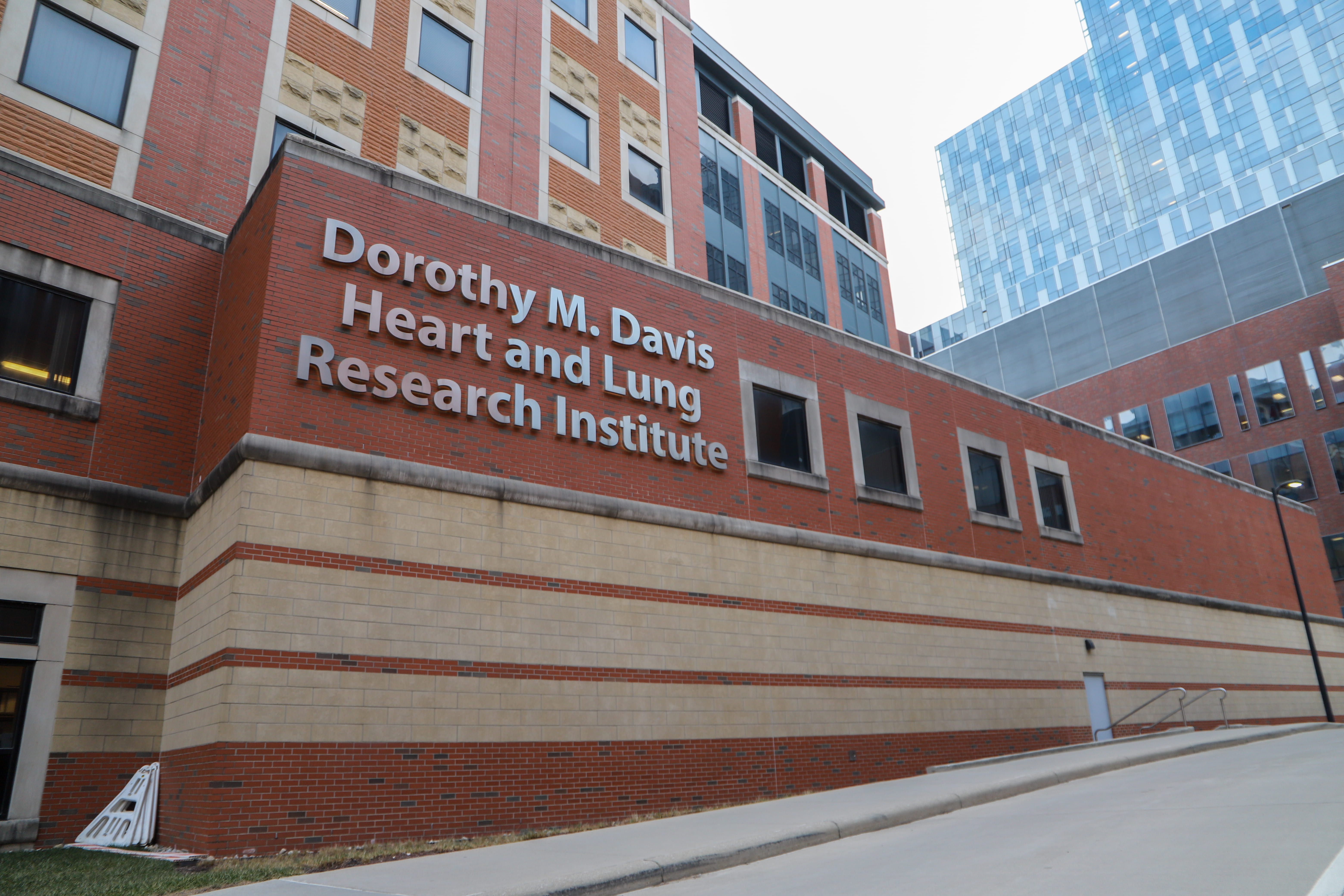
The Dorthy M. Davis Heart and Lung Research Institute, located adjacent to The Wexner Medical Center. Credit: Mackenzie Shanklin | Lantern File Photo
Researchers at Ohio State created a mathematical model of a heart attack that can predict new drug combinations that might be used to treat these cardiovascular events.
More than 800,000 Americans experience heart attacks, in which blood flow to the heart is reduced or blocked, each year, according to the Centers for Disease Control and Prevention. Even those who survive are often left with permanent damage and dangerous inflammation, taking around six to eight months to recover.
The model, developed using mice, focuses on drugs used to combat the inflammation many patients experience following a heart attack, according to the study published in the Journal of Theoretical Biology available online April 12. Specifically, the study modeled how cells vital to preventing toxic injury to the heart — known as necrosis — react positively to four different drugs over one month.
According to the study, these four drugs work by suppressing the immune system, so it doesn’t cause as much inflammation to the areas of the heart that were damaged. The study found that certain combinations of these drugs worked better to reduce inflammation than others after a heart attack.
There are multiple ways to treat a heart attack — including surgery to create new passages for the blood to flow, tubing or stent implants to open an artery and the use of immunomodulatory drugs, which suppress the immune system to prevent as much inflammation in the damaged areas of the heart. Typically only one type of immunomodulatory drug is used at one time to treat a heart attack.
Avner Friedman, distinguished mathematics and physical sciences professor and co-author of the study, said in an email previous studies based on using one drug have shown little progress, but this study was more successful.
“Treatment with some specific combinations of two drugs can significantly decrease the damage to muscle and tissue which were not affected directly by the heart attack,” Friedman said.
Friedman said while the study’s findings show progress in the research of heart attack treatments, it will take a long time for these findings to impact real-world treatments.
“First of all, the above studies are preclinical, and it takes time to move to clinical trials with one drug,” Friedman said. “And after each of the drugs is approved and passed phases one, two and three, only then FDA can consider a combination of two of these drugs.”
Friedman said though this study is preclinical, it shows a meaningful shift in the way medical research is conducted.
“I have been working on mathematical modeling of diseases since I came to OSU, often jointly with faculty from the school of medicine, and it seems to me that there is an increased understanding among the medical community that mathematics is a new important tool for medical research,” Friedman said.


